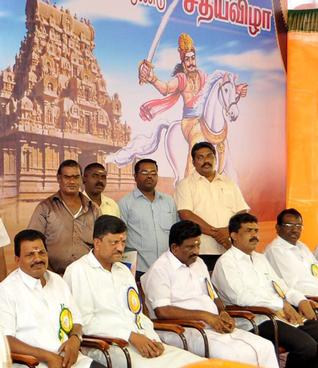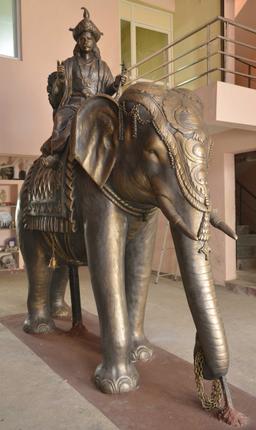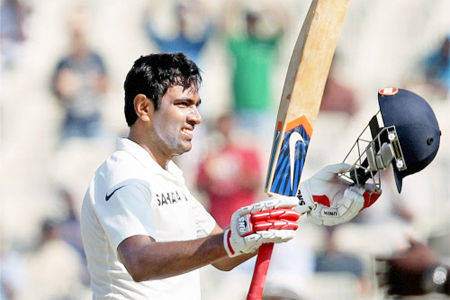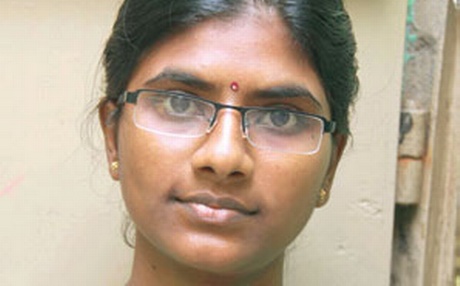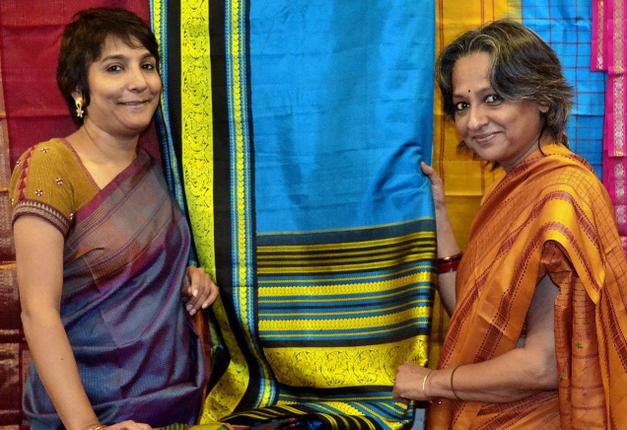
Simrat Chadha brings alive the classic Kanchipuram sari, complete with near forgotten designs and colour combinations.
‘We are forward, Weave backward. Say the pitras as they sit by the loom’ – Rg Veda 130
To the rhythm of this unspoken bit of ancient poetry, countless weavers across India and across time have woven saris, upper cloths and veshtis of great beauty and elegance. In time, each region of the country came to excel in a particular set of motifs and designs in colours of Nature that blended to create unique saris with names which were bits of poetry in themselves.
The motifs of the Kanchipuram pattu sari, the pride of South India, had lyrical names such as tuthiripoo, bavanchu, kuyilkann, muthuchir, paalum pazhamum, oosivanam, vaizhapoo and simhasana. As Simrat Chadha, a South Indian pattu revivalist, puts it, “Ironically, the Kanchipuram sari itself is a misnomer. It came to be so called only because of the aggregation of saris and weavers in the city of Kanchipuram. Kanchipuram was actually a great veshti weaving centre! The “pattu” sari, or the Kanchipuram sari as it is commonly known, also owes its design soul less to Kanchipuram and more to the aggressive, spontaneous grace of Andhra’s design language and Karnataka’s staid yet graceful weaving patterns with Tamil Nadu’s structured textile philosophy. Every art form in Tamil Nadu follows strict structural formats. Even checks or lines whatever intricacy they wished to express followed structure. The exquisite Benarasi too came under Kanchipuram pattu sari’s structured patterning when the northern ‘hans’ became the ‘hamsam.’
Benaras patterns
Between 1820 and 1920, the pattu sari weaver began to absorb Benaras patterns such as ‘kinkab’ and ‘khilat’ in a Kanchipuram sari. In fact, so great was the popularity of the Benarasi saris that this writer’s mother’s nine-yard wedding sari – a nearly 100 year old heritage piece today – was a shot silk Benarasi silk spattered with woven bouquets of English flowers bunched in baskets.

What distinguishes a true blue Kanchipuram pattu whose history, according to Hobbes and Watson, goes back to a timeless yesterday while other textile historians give it no more than 500 years?
It has a defined design structure, is heavy in weight, with a warp and weft twist called ‘murukku petta,’ tested zari and a matte finish. It can be identified by ‘seeru’ stripes and ‘kattam’ checks, three shuttle korvai which is a plain interlocked joint or a ‘muggu’ temple spine, and patterned border, mundanai end piece and so on. The borders are wide and pallus defined by elephants and parrots, among other designs.
While the korvai has all but vanished, so have many of the other features of the classic Kanchipuram sari leaving behind a rather soulless coming together of colours, uninspired borders and trendy motifs.
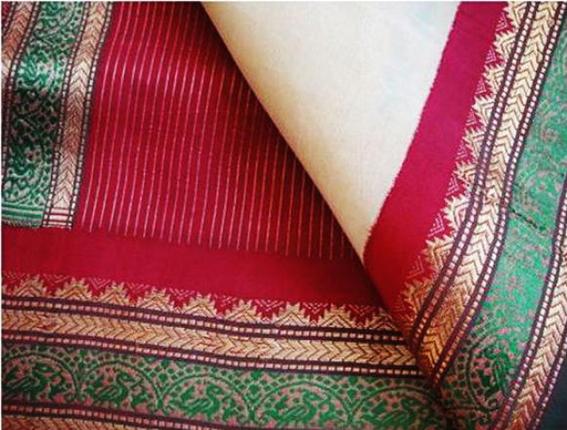
Simrat’s passionate journey of revisiting and recreating the classic Kanchipuram was to stop “a bit of our culture and heritage from vanishing in front of our eyes. It was to entice the young person into appreciating and wearing the sari. It’s also my journey of responsibility. We are building pride of association at two ends – the customer and the weaver.”
“It all began with our collection of kodu and kattam cotton saris with korvai which was hugely popular. This convinced us to start our own pattu revival journey. I read all possible books on Kanchipuram saris and began collecting originals. All the old original Kanchipurams belong to mamis — friend’s mothers, aunts, grandmother and even great grandmothers! We then took a few of these originals and visited weavers and weaving centres in Kanchipuram, Salem and Madurai, to convince the weavers to replicate them.
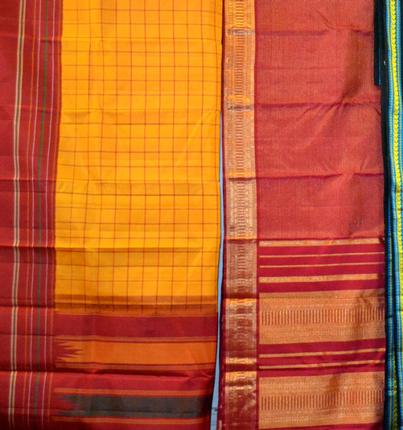
The response varied. Why should they weave a korvai which was time and labour intensive or create such an intricate border? Sometimes, there would be excitement when an older weaver would identify an oosivanam or a mubaggam which he himself had woven in his younger days! There was a lot of travelling back and forth by the revivalist team, much persuasion and great creative excitement as looms were set up and the recreation process got under way.
The collection of 60 original Kanchipurams and 20 re-created ones mesmerises with ancient mellow beauty, mellifluous mingling of colours, and near-forgotten motifs. An old oosivanam in pink with stripes and a magical border sits besides its revised avatar. The same look and feel with perhaps a subtle difference? An old Vaira-oosi with red body stripes and yellow border is now re-created with yellow body and red border.
If original Korinads entice with their harmony of colours and texture so do the recreated ones in deep blue with red stripes and yellow border or in flaming orange. Part of the re-created saris is the ‘kallam puttani’, ‘kalaialangara pudavai’ and ‘moobhagam’ in a stunning intersection of purple and grey, black and grey and so on. Original black body and broad red border Kanchipurams stun with their design harmony.
Equally harmonious are black and shocking pink, off white with huge checks and ‘maanga’ borders, turquoise with yellow border, some with tiny checks, and much more…
Call 044-24997526 if you want to re-create old heritage saris.
source: http://www.thehindu.com / The Hindu / Home> Features> Firday Review> Art / by Pushpa Chari / November 14th, 2013

